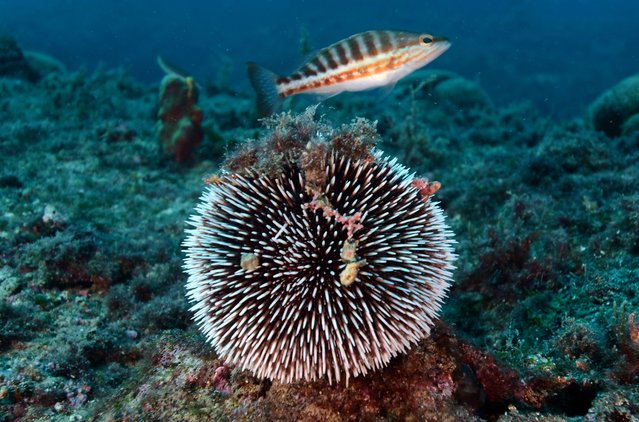
A sea urchin (Tripneustes ventricosus) is seen underwater at Asi Bay, located between Iztuzu and Sarigerme in Ortaca district of Mugla, Turkiye on April 22, 2024. Asi Bay is known for its underwater diversity and underwater caves, making it a main attraction for divers and underwater photographers. (Photo by Tahsin Ceylan/Anadolu via Getty Images)

A flock of atherina is seen underwater at Asi Bay, located between Iztuzu and Sarigerme in Ortaca district of Mugla, Turkiye on April 18, 2024. Asi Bay is known for its underwater diversity and underwater caves, making it a main attraction for divers and underwater photographers. (Photo by Tahsin Ceylan/Anadolu via Getty Images)
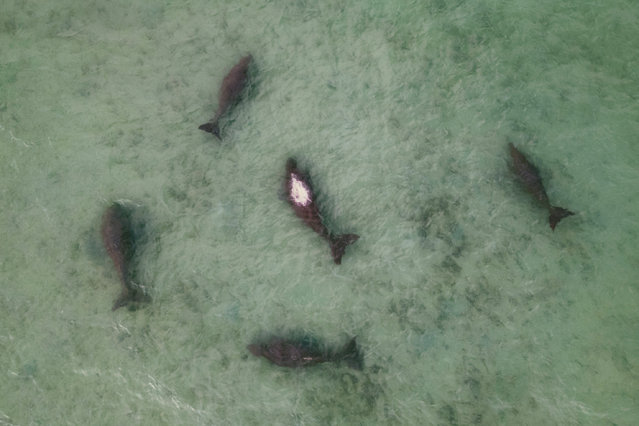
This aerial photo taken on December 27, 2024 shows a herd of dugongs near Panwa beach in Phuket. Dugongs were once commonly seen along both coasts of Thailand but now they are endangered, and are mainly reported in the Andaman Sea. (Photo by Lillian Suwanrumpha/AFP Photo)
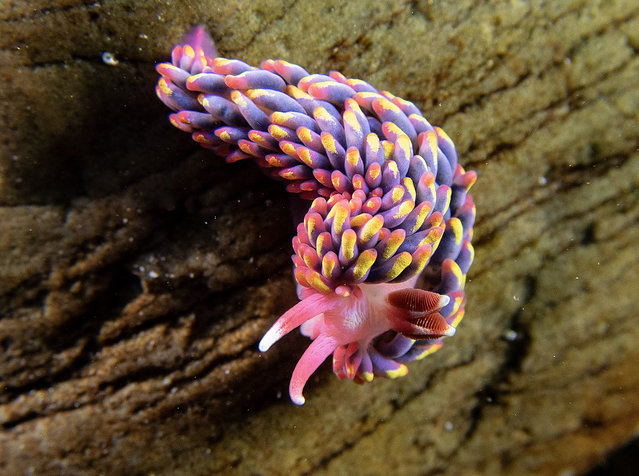
Undated handout photo courtesy of Paul Naylor of a rainbow sea slug in a Wembury rock pool. The Wildlife Trusts annual marine review for 2024 highlighted conservation projects to reconnect land and ocean habitats and restore native oyster beds and a network of snorkelling trails to bring people closer to nature in Scotland's seas. Issue date: Thursday December 19, 2024. (Photo by Paul Naylor/PA Wire)
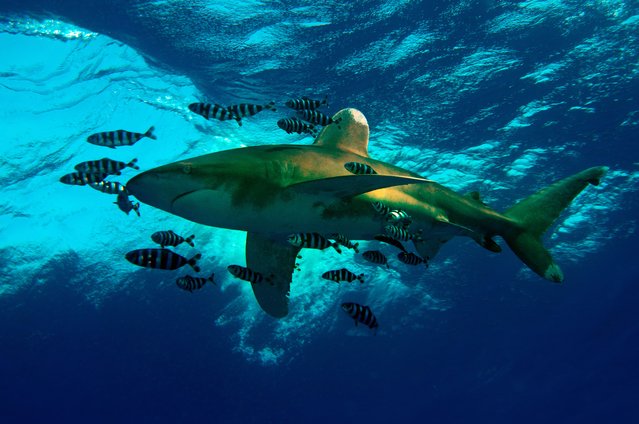
An oceanic whitetip shark (Carcharhinus longimanus) is seen swimming in Egypt's Red Sea, one of the most important places in the world for underwater richness and home to many species on December 22, 2024. The Red Sea, which is an extension of the Indian Ocean and located between the Arabian Peninsula and the African continent, offers both the scientific world and divers the opportunity to dive in its clear waters with its strategic and historical importance as well as its unique living diversity. (Photo by Tahsin Ceylan/Anadolu via Getty Images)
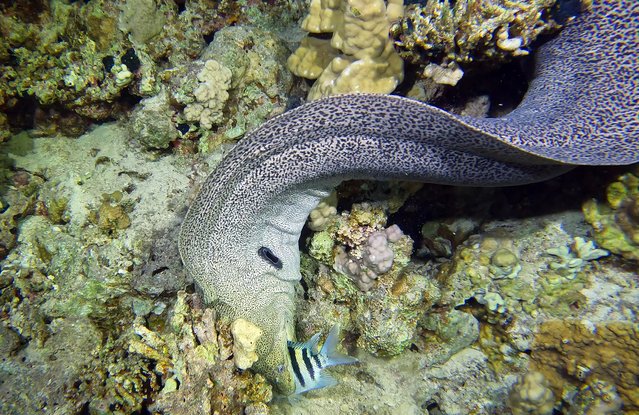
Moray eel is seen in the colorful underwater world of the Red Sea between Africa and Asia in Egypt on January 06, 2025. Due to night diving, which has a special importance in diving literature and requires expertise, many fish and living species that cannot be seen during day dives can be recorded. (Photo by Tahsin Ceylan/Anadolu via Getty Images)
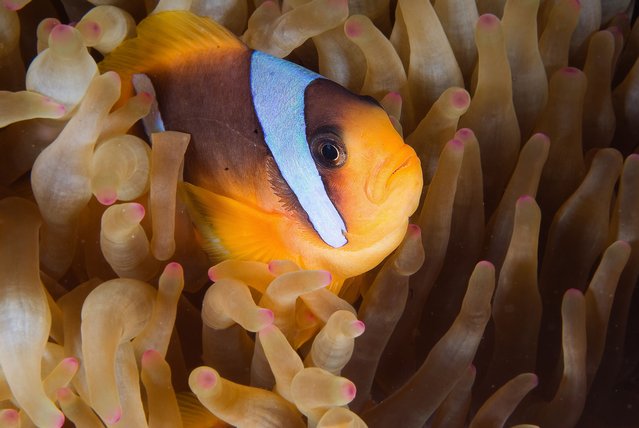
An ocellaris clownfish (Amphiprion ocellaris) is seen swimming in Egypt's Red Sea, one of the most important places in the world for underwater richness and home to many species on December 22, 2024. The Red Sea, which is an extension of the Indian Ocean and located between the Arabian Peninsula and the African continent, offers both the scientific world and divers the opportunity to dive in its clear waters with its strategic and historical importance as well as its unique living diversity. (Photo by Tahsin Ceylan/Anadolu via Getty Images)
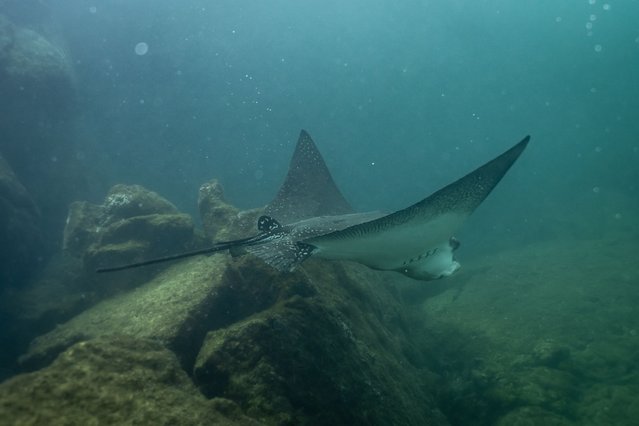
A Thornback ray is seen underwater in Los Tuneles & Cabo Rosa, part of Galapagos archipelago on February 13, 2025. (Photo by Ozge Elif Kizil/Anadolu via Getty Images)
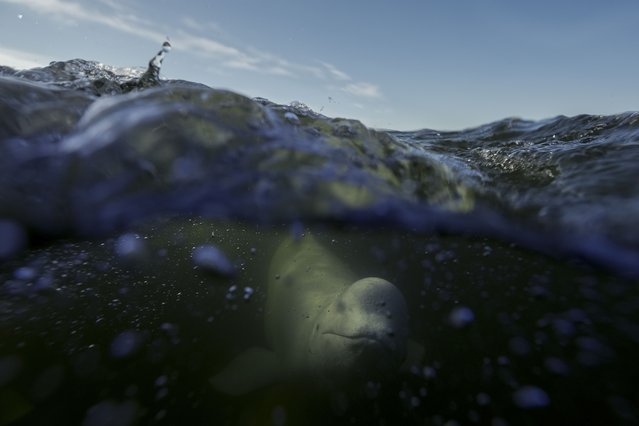
A beluga whale swims through the Churchill River, August 5, 2024, near Churchill, Manitoba. (Photo by Joshua A. Bickel/AP Photo)

A turtle swims on the beach in Galle, Sri Lanka, on December 24, 2024. (Photo by Thilina Kaluthotage/NurPhoto/Rex Features/Shutterstock)
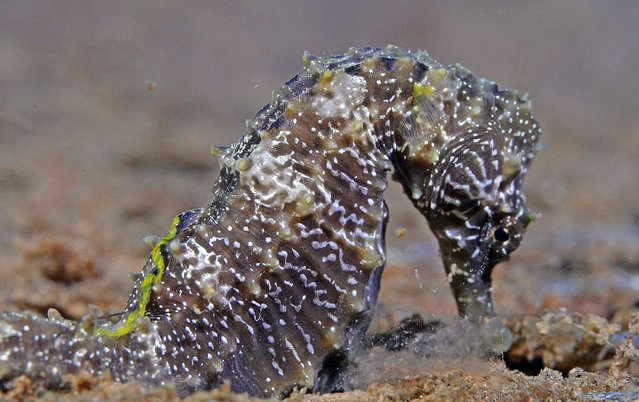
An underwater image from Degirmendere, Golcuk of Kocaeli, Turkiye shows a seahorse and reveals the spread of mucilage, which remains unseen on the surface of the water on December 29, 2024. Observed particularly between depths of 0-20 meters, the mucilage has caused significant harm to marine life. The thick layer traps jellyfish in the pelagic zone, covers the shells of mussels, and negatively impacts seahorses, one of the region's iconic species. (Photo by Tahsin Ceylan/Anadolu via Getty Images)
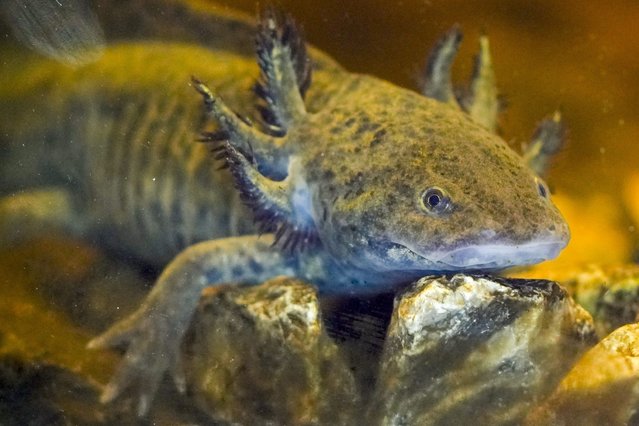
An axolotl swims in an aquarium at a museum in Xochimilco Ecological Park in Mexico City, Tuesday, February 11, 2025. (Photo by Marco Ugarte/AP Photo)
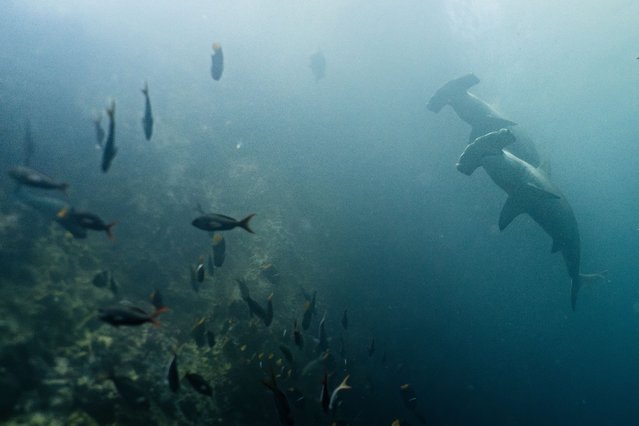
Two great hammerhead is seen among fish in Kicker Rock Islet near San Cristobal island, part of Galapagos archipelago on February 09, 2025. (Photo by Ozge Elif Kizil/Anadolu via Getty Images)
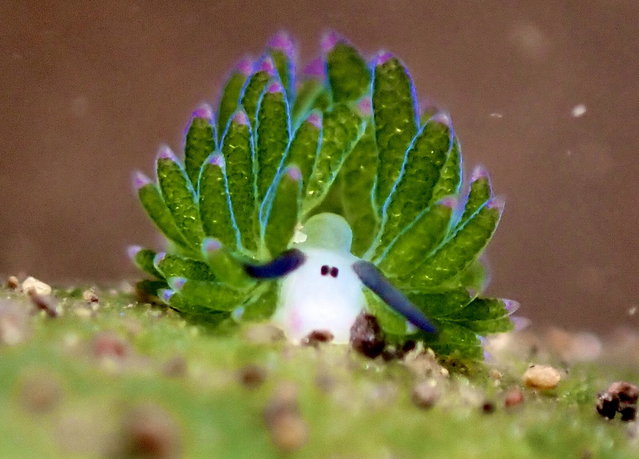
Keen diver Yusuke Fukami fulfilled a personal dream by snapping a cartoon-like Costasiella sea slug while in Bali in the last decade of December 2024. (Photo by Yusuke Fukami/South West News Service)

A flock of fish in Kicker Rock Islet near San Cristobal island, part of Galapagos archipelago on February 09, 2025. Located in Ecuadorone of South America's most fascinating countriesthe Galapagos National Park spans 13 main islands and numerous islets, captivating biologists, environmental scientists, and tourists with its rich ecology. Recognized as one of the world's largest and most biologically diverse marine protected areas, the Galapagos Marine Reserve is home to more than 2,900 marine species. As a rising destination for studying and documenting underwater biodiversity, the archipelago hosts an array of remarkable wildlife, including hammerhead sharks, sand sharks, sea turtles, stingrays, whales, dolphins, albatrosses, sea lions, penguins, fur seals, cormorants, marine iguanas, tropical fish, and the great blue heron. (Photo by Ozge Elif Kizil/Anadolu via Getty Images)
01 Jun 2025 03:10:00,
post received
0 comments
